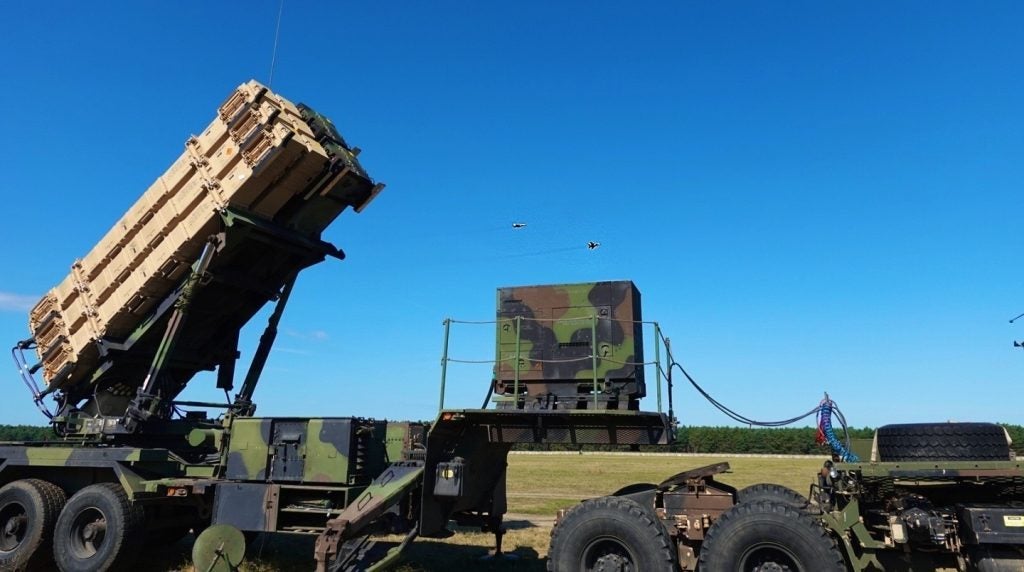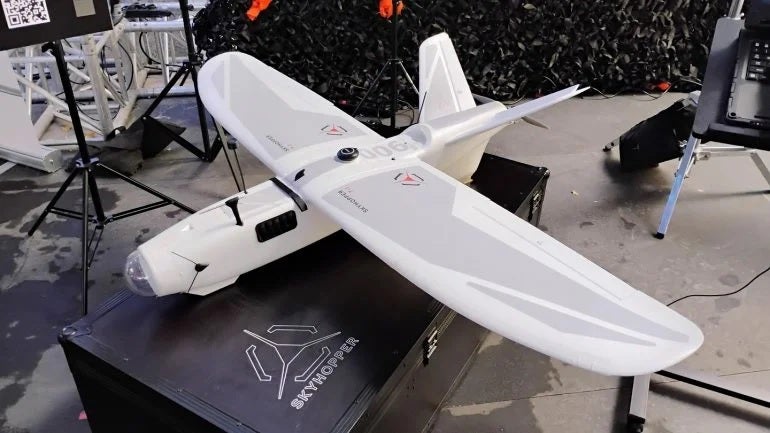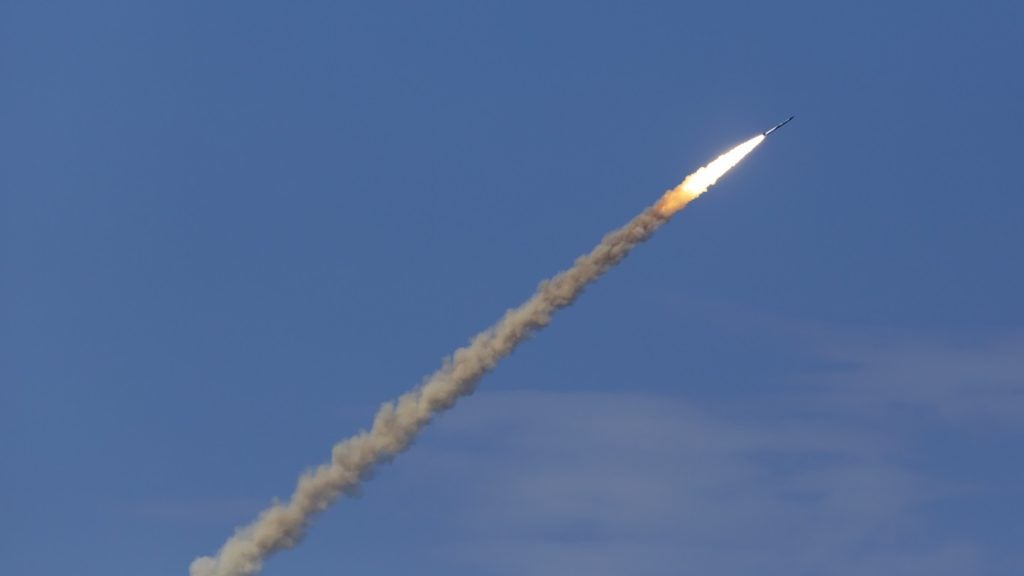Hidden in the weeds of the UK’s latest military assistance package to Ukraine was the mention of a new air defence system, dubbed Gravehawk, that was previously unknown to defence observers, in what appears to be part of Kyiv’s move to harness rapid defence innovation in its ongoing war against Russia.
Announced during the visit of UK Prime Minister Keir Starmer to the war-torn country on 16 January, Gravehawk was described as a UK designed “mobile air defence system” the size of a shipping container and able to “retrofit” air-to-air missiles into a ground-based air defence role.
This means the Ukrainian Armed Forces can use missiles already in its inventory, removing the risk of delivery delays of pledged munitions.
“With Ukraine under constant Russian bombardment, the Gravehawk system will boost Ukraine’s air defences, allowing them to defend their cities, troops and critical infrastructure,” the UK Government said.
Two prototypes of the air defence capability system were apparently tested in Ukraine in September 2024, and a further 15 system will be delivered in 2025.
However, little else is known of the system, including the type of launcher system used, the timeline for development work, the costs involved, or whether additional Gravehawk units will be delivered in 2026 and beyond.
The UK Ministry of Defence declined to comment when approach for comment by Army Technology, citing operational security.
The announcement was part of a wider £4.5bn ($5.5bn) boost for Ukraine in 2025 will see the UK will procure “hundreds more air defence systems, drones and essential equipment support to sustain Ukrainian forces on the front line”, according to the government release. The Gravehawk system itself was funded jointly by the UK and Denmark.
Ukraine embracing defence innovation
The implications of the announcement point towards a need to rapidly develop a launcher system that can use existing air-to-air missile in Ukraine’s inventory. Since mid-2024 and over the winter months, Russia has embarked on a broad campaign of air strikes using one-way attack munitions against Ukraine’s critical national infrastructure.
As a result, Ukraine’s air defence network has been stretched significantly in a bid to maintain key power and utilities during the cold and dark months.
Nato countries have provided a range of air defence systems to Ukraine, including the advanced Patriot and IRIS-T capabilities. The mention of Gravehawk being a “mobile air defence launcher” could also indicate a need for tactical battlefield mobility.

Ukraine has received stocks of the US-origin AIM-9X short-range air-to-air missile, which can be adapted for ground launch, although no mention was made in the UK release in any US involvement in Gravehawk. The AIM-9X is the munition used in the NASAMS medium-range air defence system, also provided to Ukraine by Nato forces.
Other missiles known to be stocked by Ukraine include the Soviet-era R-27 medium range and R-60 and R-73 short range air-to-air missiles, as well as the US origin AIM-120 AMRAAM, AIM-7, and AIM-9 missiles. It is also thought that Ukraine could be operating the UK ASRAAM short-range air-to-air missile, commonly used by the UK Royal Air Force.
Ukraine has form for utilising rapid system development, or adapting munitions from their original use, against Russian forces. The UK’s Brimstone missile, an air-to-ground missile, was adapted by Ukraine to be fired from trucks in a surface-attack role, and which could have been the inspiration for the UK’s own Project Wolfram programme.

Ukrainian industry is also rapidly developing uncrewed capabilities across the warfighting domains, as witnessed by Army Technology in Lviv in 2024.
In addition, its use of uncrewed surface vessels as maritime one-way attack platforms caused sigificant damage to Russia's Black Sea fleet.









